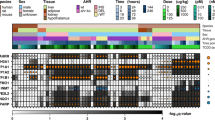Abstract
The main concern in exploring modulation of PPARs in experimental animals is probably the choice of the model. Although mechanistic studies may be well designed using knockout and transgenic animals, the interpretation of results with respect to inferred results of PPAR activation into humans should be performed cautiously. This is even more important in this field considering that undesired and unexpected effects have been already described in human epidemiologic studies. Taken together, these observations suggest that a global approach using omic technologies, although expensive, is probably the most suitable to obtain useful data. Also, in this approach, we propose all tissues should be explored, not only those obviously relevant to metabolism, or stored in proper conditions if further assessment is required.
Access this chapter
Tax calculation will be finalised at checkout
Purchases are for personal use only
Similar content being viewed by others
References
Medzhitov R (2008) Origin and physiological roles of inflammation. Nature 454:428–435
Gregoire FM, Kresten S, Harrington W (2007) PPARs and obesity. PPAR Res 2007:78475
Stienstra R, Duval C, Muller M et al (2007) PPARs, obesity, and inflammation. PPAR Res 2007:95974
Mandard S, Muller M, Kersten S (2004) Peroxisome proliferator-activated receptor α target genes. Cell Mol Life Sci 61:393–416
Vanden Berghe W, Vermeulen L, Delerive P et al (2003) A paradigm for gene regulation: inflammation. NF-kappaB and PPAR. Adv Exp Med Biol 544:181–196
Lazar MA (2005) PPPAR γ, 10 years later. Biochimie 87:9–13
Barish GD, Narkar V, Evans R (2006) PPAR delta: a dagger in the heart of the metabolic syndrome. J Clin Invest 116:590–597
Rodríguez-Sanabria F, Rull A, Aragones G et al (2010) Differential response of two models of genetically modified mice fed with high fat and cholesterol diets: relationship to the study of non-alcoholic steatohepatitis. Mol Cell Biochem 343:59–66
Rull A, Beltran-Debon R, Aragones G et al (2010) Expression of cytokine genes in the aorta is altered by the deficiency in MCP-1: effect of a high-fat, high-cholesterol diet. Cytokine 50:121–128
Rull A, Rodriguez F, Aragones G et al (2009) Hepatic monocyte chemoattractant-1 is upregulated by dietary cholesterol and contributes to liver steatosis. Cytokine 48:273–279
Vinaixa M, Rodgriguez M, Rull A et al (2010) Metabolomic assessment of the effect of dietary cholesterol in the progressive development of fatty liver disease. J Proteome Res 9:2527–2538
Rull A, Vinaixa M, Angel Rodriguez M et al (2010) Metabolic phenotyping of genetically modified mice: An NMR metabonomic approach. Biochimie 91:1053–1057
Storey J, Tibshirani R (2003) Statistical significance for genomewide studies. Proc Natl Acad Sci USA 100:9440–9445
Antal C, Teletin M, Wendling O et al (2007) Tissue collection for systematic phenotyping in the mouse. Curr Protoc Mol Biol Chapter 29:Unit 29A.4
Joven J, Rull A, Ferre N et al (2007) The results in rodent models of atherosclerosis are not interchangeable: the influence of diet and strain. Atherosclerosis 195:e85–92
Mark M, Teletin M, Antal C et al (2007) Histopathology in mouse metabolic investigations. Curr Protoc Mol Biol Chapter 29:Unit 29B.4
Acknowledgments
AR, RBD, and GA are recipients of fellowships from the Comissionat per a Universitats i Recerca del Departament d’Innovació, Universitats i Empresa de la Generalitat de Catalunya i del Fons Social Europeu. This work was financially supported by the Fondo de Investigación Sanitaria (FIS PI08/1381 and FIS PI08/1175).
Author information
Authors and Affiliations
Corresponding author
Editor information
Editors and Affiliations
Rights and permissions
Copyright information
© 2013 Springer Science+Business Media New York
About this protocol
Cite this protocol
Rull, A., Aragonès, G., Beltrán-Debón, R., Rodríguez-Gallego, E., Camps, J., Joven, J. (2013). Exploring PPAR Modulation in Experimental Mice. In: Badr, M., Youssef, J. (eds) Peroxisome Proliferator-Activated Receptors (PPARs). Methods in Molecular Biology, vol 952. Humana Press, Totowa, NJ. https://doi.org/10.1007/978-1-62703-155-4_19
Download citation
DOI: https://doi.org/10.1007/978-1-62703-155-4_19
Published:
Publisher Name: Humana Press, Totowa, NJ
Print ISBN: 978-1-62703-154-7
Online ISBN: 978-1-62703-155-4
eBook Packages: Springer Protocols




